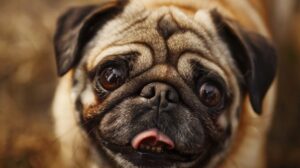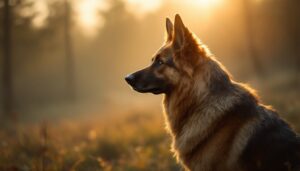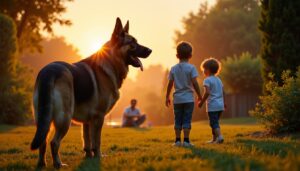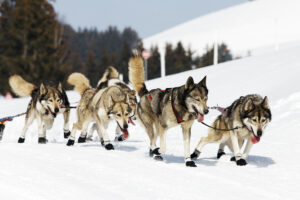Introduction
The Siberian Husky is undeniably one of the most striking and popular dog breeds in the United States. With their wolf-like appearance, piercing blue eyes, and energetic personality, it’s no wonder so many dog enthusiasts are drawn to these magnificent animals. However, owning a Siberian Husky isn’t always practical for everyone. These high-energy working dogs require significant exercise, consistent training, and can be challenging for first-time dog owners or those with limited space.
Fortunately, several other dog breeds share similar characteristics with the Siberian Husky while potentially offering attributes that might better suit your lifestyle. Whether you’re looking for dogs that look like huskies, dogs that act like huskies, or simply breeds like husky but smaller, this comprehensive guide will introduce you to four remarkable dog breeds like the Siberian Husky that you’ll wish you had discovered sooner.
In this article, we’ll explore these magnificent husky look alike dog breeds, comparing their physical traits, personalities, care requirements, and compatibility with different living situations. By the end, you’ll have a thorough understanding of these wolf looking dog breeds and be better equipped to determine which of these husky alternatives might be the perfect addition to your family.
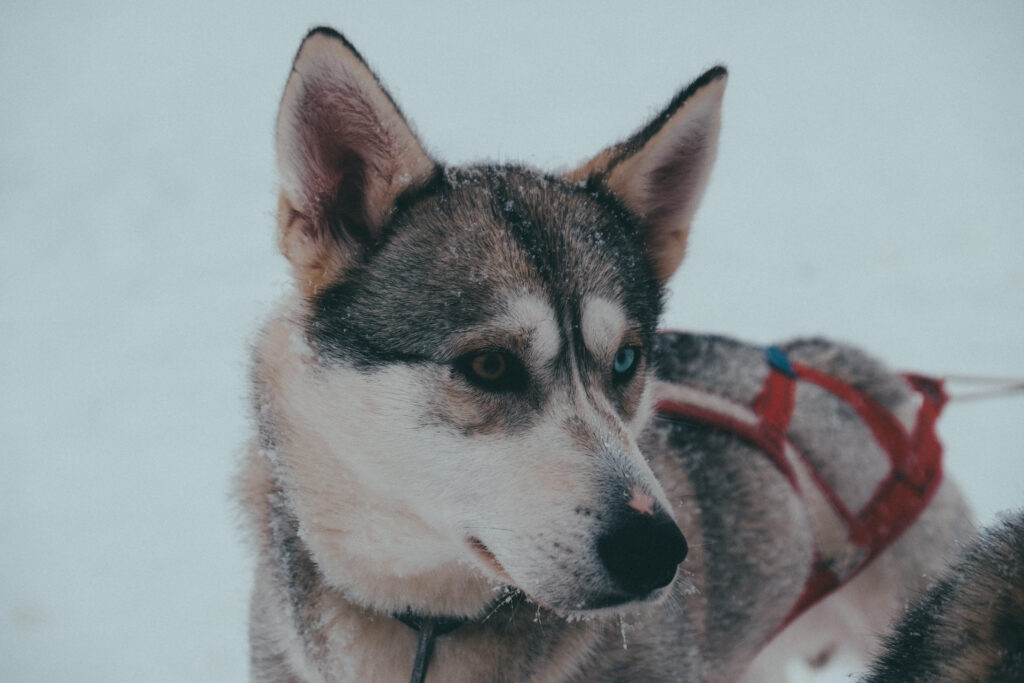
Understanding What Makes Siberian Huskies Unique
Before diving into dog breeds like the Siberian Husky, it’s important to understand what makes these Arctic canines so special. Originally bred by the Chukchi people of northeastern Asia, Siberian Huskies were developed as endurance sled dogs capable of pulling light loads over vast distances in harsh polar conditions.
Key Characteristics of Siberian Huskies:
- Appearance: Medium-sized with a thick double coat, erect triangular ears, and often striking blue or multi-colored eyes
- Personality: Independent, intelligent, playful, and somewhat stubborn
- Exercise Needs: Extremely high; requires 1-2 hours of vigorous exercise daily
- Social Nature: Generally good with people and other dogs, but strong prey drive
- Vocalization: Known for “talking” rather than barking; often howls
- Intelligence: Very smart but independent-minded, making training challenging
- Coat: Thick double coat that sheds heavily twice yearly
- Working Ability: Natural endurance athletes with strong pulling instinct
Many people seeking dog breeds like the Siberian Husky are drawn to these distinctive physical and behavioral traits. However, these same characteristics can make huskies challenging pets. Their high energy, independent nature, and impressive intelligence can translate to destructive behavior if they don’t receive adequate exercise and mental stimulation.
For those who love the look and personality of husky-type dogs but need a slightly different package, the following four breeds offer compelling alternatives. These dogs share many similarities with Siberian Huskies while providing some variations that might better suit particular living situations or owner preferences.
1. Alaskan Malamute: The Powerful Cousin
When comparing dog breeds like the Siberian Husky, the Alaskan Malamute often tops the list. In fact, the malamute vs husky comparison is common among Arctic breed enthusiasts, as these dogs share a similar appearance and working heritage.
Physical Characteristics
Alaskan Malamutes are often mistaken for Siberian Huskies, but there are notable differences. Malamutes are larger and more powerfully built, with males weighing between 85-100 pounds compared to the 45-60 pounds of male Siberian Huskies. While they share the wolf-like appearance with erect ears and a thick double coat, Malamutes typically have brown eyes rather than the blue eyes like husky breeds often display.
Their coats come in various colors, including wolf gray, black and white, sable, and red. Like the Siberian Husky, Malamutes have a thick double coat that provides excellent insulation in cold weather and sheds profusely, especially during seasonal changes.
Personality and Temperament
Similar to Siberian Huskies, Alaskan Malamutes are intelligent, independent, and possess a strong work ethic. However, Malamutes tend to be more devoted to their families and slightly less independent than Huskies. They’re generally less prone to wandering off and may be somewhat easier to train, though they still maintain the self-sufficient nature common in Arctic breeds.
As one of the most popular dog breeds like the Siberian Husky, Malamutes share the playful, energetic personality but are often described as more dignified and less “clownish” than their Husky cousins. They are affectionate with family members and typically good with children when properly socialized.
Exercise and Care Requirements
Like Siberian Huskies, Alaskan Malamutes are high-energy working dog breeds that require substantial daily exercise. Their powerful build makes them excellent for activities like hiking, backpacking, and skijoring. Without adequate physical activity, these energetic dog breeds like husky varieties can become destructive and difficult to manage.
Malamutes share the Husky’s heavy shedding coat, requiring regular brushing and grooming. They’re also similarly adapted to cold weather but can struggle in hot climates. One notable difference in care requirements is that Malamutes may be more prone to food aggression than Huskies, requiring careful training and feeding management.
Ideal Owner and Living Situation
The ideal Malamute owner is an active individual or family with previous dog experience, a secure yard, and plenty of time for exercise and training. While slightly less escape-prone than Huskies, Malamutes still need secure containment and supervision. Their larger size means they need more space than a Husky, making them less suitable for apartment living.
For those seeking dog breeds like the Siberian Husky with a more powerful build and slightly more family-oriented temperament, the Alaskan Malamute represents an excellent choice among husky look alike dog breeds.
2. Alaskan Klee Kai: The Miniature Alternative
For those seeking breeds like husky but smaller, the Alaskan Klee Kai represents a perfect solution. Developed in the 1970s specifically to create a companion-sized version of the Siberian Husky, these dogs maintain the distinctive appearance of their larger counterparts in a more manageable package.
Physical Characteristics
Alaskan Klee Kai come in three size varieties: toy (up to 13 inches tall), miniature (13-15 inches), and standard (15-17 inches), making them significantly smaller than Siberian Huskies. Despite their reduced size, they maintain the striking wolf-like appearance, with the same facial mask, erect triangular ears, and often the blue eyes like husky breeds are known for.
These dogs that look like huskies come in the same color patterns as their larger counterparts: black and white, gray and white, or red and white. They also possess the same thick double coat, though shedding may be slightly less overwhelming due to their smaller size.
Personality and Temperament
Alaskan Klee Kai share many personality traits with Siberian Huskies, including intelligence, playfulness, and a somewhat independent nature. However, they’re often more reserved with strangers than Huskies, making them excellent watchdogs. They tend to form strong bonds with their families and can be somewhat more dependent than traditional Huskies.
As intelligent dog breeds like husky varieties, Klee Kai require mental stimulation and consistent training. They maintain the vocal nature of Huskies, often “talking” to their owners and occasionally howling, though generally less frequently than full-sized Huskies.
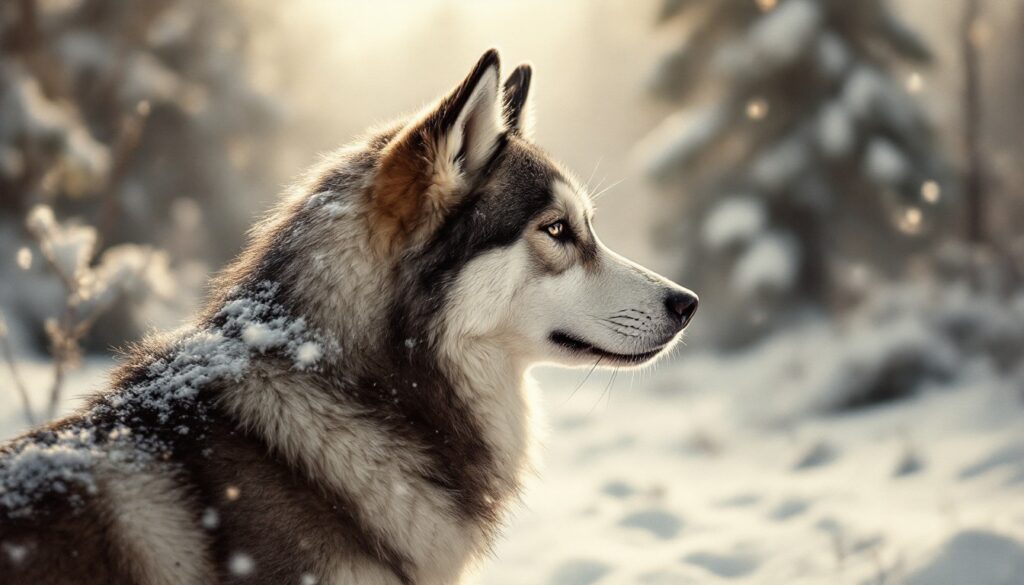
Exercise and Care Requirements
While still energetic, Klee Kai have somewhat lower exercise requirements than full-sized Siberian Huskies, making them more manageable for owners with moderate activity levels. A brisk 30-45 minute walk daily, combined with play sessions, is typically sufficient for these medium sized dogs like husky breeds.
Grooming needs remain similar to Siberian Huskies, with regular brushing required to manage their double coat. They experience the same seasonal “blowing coat” periods where shedding increases dramatically. Like their larger counterparts, Klee Kai are generally clean dogs with minimal “doggy odor.”
Ideal Owner and Living Situation
The Alaskan Klee Kai is ideal for active individuals or families who love the husky appearance but have limited space or less time for extensive exercise. They adapt well to apartment living provided they receive adequate daily activity. Their smaller size makes them more manageable for first-time dog owners, though their intelligence and independence still require consistent training.
For those seeking dog breeds like the Siberian Husky in a more compact package, the Alaskan Klee Kai offers the distinctive appearance and spirited personality in a size that fits more comfortably into urban lifestyles and smaller homes.
3. Northern Inuit Dog: The Wolf-Like Companion
Among wolf looking dog breeds, the Northern Inuit Dog stands out for its remarkably lupine appearance combined with a companionable temperament. Developed in the United Kingdom in the 1980s by crossing German Shepherds, Siberian Huskies, Alaskan Malamutes, and possibly some Inuit dogs, this breed was created specifically to produce a wolf-like appearance with a more family-friendly disposition.
Physical Characteristics
Northern Inuit Dogs strongly resemble wolves, even more so than Siberian Huskies in many cases. They are medium to large-sized dogs, typically weighing between 55-110 pounds, making them somewhat larger than Siberian Huskies. They possess the same pointed ears and wolf-like facial structure but usually have amber or brown eyes rather than the blue eyes like husky breeds often feature.
Their thick double coat comes in various shades of gray, sable, black, and white – all contributing to their wolf-like appearance. Like other spitz type dog breeds, Northern Inuits have a straight tail that curls slightly over their back when alert.
Personality and Temperament
Unlike many dog breeds like the Siberian Husky that maintain a strong independent streak, Northern Inuit Dogs were specifically bred to be more trainable and family-oriented. They tend to form strong bonds with their human family members and are known for being particularly good with children when properly socialized.
Northern Inuits share the intelligence of Huskies but are generally more eager to please, making them somewhat easier to train. However, they maintain the playful, social nature that makes husky personality similar breeds so appealing. Like Huskies, they typically get along well with other dogs, though early socialization is still important.
Exercise and Care Requirements
As active, intelligent animals, Northern Inuit Dogs require significant daily exercise – similar to Siberian Huskies. They excel at activities like hiking, running, and dog sports. Their working dog heritage means they enjoy having a job to do and will benefit from mental challenges as well as physical exercise.
Grooming needs are comparable to other husky appearance dog breeds, with regular brushing required to manage their thick double coat, particularly during shedding seasons. They generally do well in cool climates but may struggle in extreme heat.
Ideal Owner and Living Situation
The ideal home for a Northern Inuit includes active owners who can provide daily exercise, mental stimulation, and consistent, positive training. While slightly more adaptable than pure Siberian Huskies, they still do best in homes with secure outdoor space where they can play safely.
For those seeking the wolf-like appearance of a Husky with a slightly more trainable and family-oriented temperament, the Northern Inuit Dog represents one of the best husky alternatives available. Their striking appearance combined with their loyal nature makes them an excellent choice for experienced dog owners who want the wolf look with a more manageable personality.
4. Samoyed: The Smiling Spitz
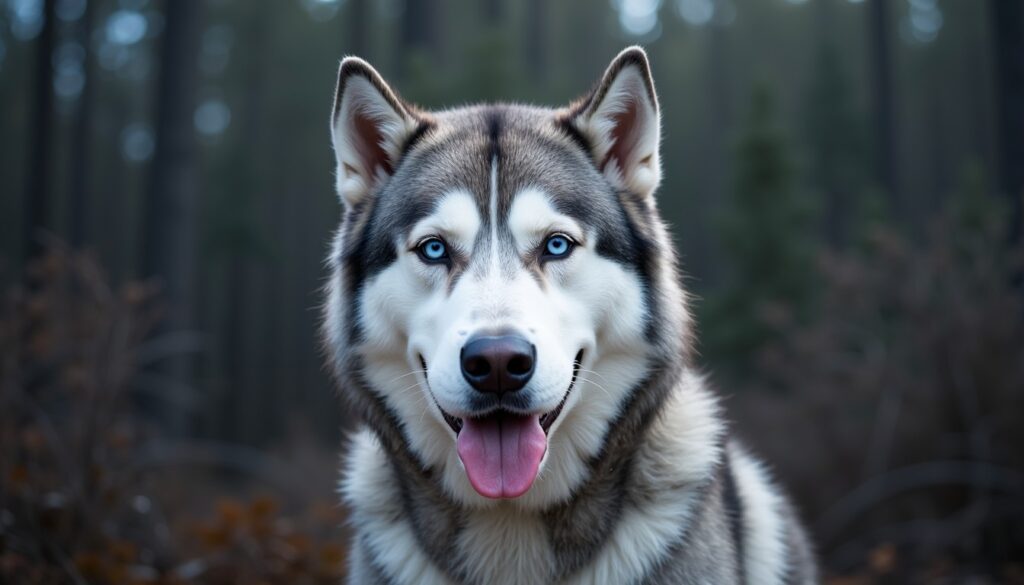
Among the fluffy dog breeds like husky varieties, the Samoyed stands out for its stunning all-white coat and perpetual “smiling” expression. While visibly different from the Siberian Husky in coloration, these dogs share a similar spitz-type heritage and many behavioral characteristics that make them an excellent alternative for husky enthusiasts.
Physical Characteristics
Samoyeds are medium-sized dogs, similar in stature to Siberian Huskies, typically weighing between 35-65 pounds. Their most distinctive feature is their thick, white, fluffy double coat that stands out from their body, creating a cloud-like appearance. Unlike the colored markings of Huskies, Samoyeds are predominantly white, sometimes with light biscuit or cream shadings.
Like Huskies, they have erect triangular ears, a fox-like face, and a tail that curls over their back. Their eyes are usually dark, unlike the blue eyes like husky breeds often possess, and they have a distinctive “smiling” appearance created by the upturned corners of their mouth.
Personality and Temperament
Samoyeds share several personality traits with Siberian Huskies – they’re intelligent, playful dog breeds like husky varieties, with an energetic and friendly disposition. However, Samoyeds were bred not only as working dogs but also as companions, making them generally more people-oriented and less independent than Huskies.
These dogs typically excel at family life and are known for being particularly good with children, earning them the nickname “nanny dogs” in some circles. They’re social creatures who typically get along well with other dogs and people, making them less suitable as guard dogs but excellent as family companions.
Exercise and Care Requirements
Like Siberian Huskies, Samoyeds are energetic dog breeds that require substantial daily exercise. They enjoy activities like walking, hiking, and playing in secure areas. Their working heritage means they excel at dog sports like agility, obedience, and even pulling activities.
Their thick white coat requires significant grooming attention – possibly even more than Huskies. Regular brushing is essential to prevent matting, and like Huskies, they experience heavy seasonal shedding. Their bright white coat may also show dirt more readily than the multi-colored coats of Huskies.
Ideal Owner and Living Situation
The ideal Samoyed owner is an active individual or family with time for both exercise and grooming. They do best in cooler climates due to their thick coat but adapt well to family life in various settings. While slightly more trainable than Huskies, they still need consistent, positive training methods and early socialization.
For those seeking playful dog breeds like husky varieties but with a more family-oriented temperament and distinctive appearance, the Samoyed offers an excellent alternative. Their stunning white coat, friendly disposition, and similar exercise needs make them a wonderful option for husky lovers looking for a slightly different package.
Comparison Chart: Dog Breeds Like the Siberian Husky
When evaluating dog breeds like the Siberian Husky, it’s helpful to compare key characteristics side by side:
| Characteristic | Siberian Husky | Alaskan Malamute | Alaskan Klee Kai | Northern Inuit | Samoyed |
|---|---|---|---|---|---|
| Size | Medium (35-60 lbs) | Large (75-100 lbs) | Small (10-25 lbs) | Medium-Large (55-110 lbs) | Medium (35-65 lbs) |
| Exercise Needs | Very High | Very High | Moderate-High | High | High |
| Trainability | Challenging | Moderately Challenging | Moderate | Moderate | Moderate |
| Shedding | Heavy | Heavy | Moderate-Heavy | Heavy | Very Heavy |
| Family-Oriented | Moderate | Moderate-High | High | High | Very High |
| Prey Drive | High | Moderate-High | Moderate | Moderate | Low-Moderate |
| Vocalization | Howls, “Talks” | Less vocal | “Talks” | Moderate | Moderate |
| Good with Kids | Generally Yes | Generally Yes | Yes, with supervision | Very Good | Excellent |
| Cold Weather | Excellent | Excellent | Very Good | Very Good | Excellent |
| Heat Tolerance | Poor | Poor | Poor | Poor | Poor |
This comparison highlights how these intelligent dog breeds like husky varieties share many characteristics while offering different combinations of traits that might better suit individual owners and living situations.
Other Noteworthy Mentions
While our focus has been on the four primary dog breeds like the Siberian Husky, several other breeds share significant similarities and deserve mention:
Husky Mix Breeds
Husky mix breeds often combine the distinctive appearance and personality of Siberian Huskies with traits from other breeds, creating unique companions. Popular husky mix breeds include:
- Pomsky (Pomeranian/Husky): A small to medium-sized dog with Husky markings and a fluffy coat
- Gerberian Shepsky (German Shepherd/Husky): Combines intelligence and trainability with Husky appearance
- Huskita (Akita/Husky): A powerful, loyal companion with strong protective instincts
Additional Spitz-Type Breeds
Several other spitz type dog breeds share the distinctively wolfish appearance and some behavioral characteristics with Siberian Huskies:
- Finnish Lapphund: A medium-sized herding dog with a thick coat and friendly disposition
- Norwegian Elkhound: A sturdy hunting dog with independent yet loyal temperament
- Greenland Dog: A powerful Arctic working dog with strong endurance and independence
- Canadian Eskimo Dog: One of North America’s oldest indigenous breeds with incredible cold tolerance
These breeds may not be as commonly available as our featured four dog breeds like the Siberian Husky, but they offer additional options for those seeking working dog breeds like husky varieties with particular combinations of traits.
Making the Right Choice: Which Husky-Like Breed Is Right for You?
When choosing among dog breeds like the Siberian Husky, several factors should guide your decision:
Lifestyle Compatibility
Consider how each breed’s exercise needs align with your daily routine. If you’re an avid runner or hiker, high-energy breeds like the Malamute or Northern Inuit might be perfect companions. If your activity level is more moderate, the smaller Alaskan Klee Kai or the more adaptable Samoyed might be better matches.
Living Space
Your living environment plays a crucial role in breed selection. For apartment dwellers, smaller breeds like the Alaskan Klee Kai may adapt more readily to limited space, while larger dogs like Malamutes and Northern Inuits generally thrive in homes with yards. All these fluffy dog breeds like husky varieties need adequate space to move and play.
Family Dynamics
Consider your household composition. Families with young children might prefer the naturally gentle Samoyed or the family-oriented Northern Inuit over the more independent Husky or powerful Malamute. Single owners might appreciate the manageable size of the Klee Kai or the devoted nature of the Northern Inuit.
Experience Level
Be honest about your experience with dogs, particularly with independent, intelligent breeds. First-time dog owners might find the Samoyed or Alaskan Klee Kai more manageable than the more challenging Malamute. If you’re experienced with dogs that act like huskies, you might be well-equipped for any of these breeds.
Long-Term Commitment
Remember that all these dog breeds like the Siberian Husky can live 12-15 years or more. Consider how your lifestyle might change during that time and whether your chosen breed will continue to be a good fit through different life stages.
Caring for Spitz-Type Dogs: Special Considerations
All the dog breeds like the Siberian Husky discussed in this article share certain care requirements due to their spitz-type heritage:
Coat Maintenance
These fluffy dog breeds like husky varieties all have double coats that require regular brushing. Invest in quality grooming tools and establish a routine to manage shedding. Consider professional grooming during heavy shedding seasons.
Temperature Sensitivity
All these breeds thrive in cool weather but can struggle in heat. Provide air conditioning during hot weather, avoid exercise during the hottest parts of the day, and never leave these dogs in hot cars or without shade and water outdoors.
Containment Needs
Many of these intelligent dog breeds like husky varieties have strong wandering instincts. Secure fencing, microchipping, and consistent leash training are essential for their safety.
Mental Stimulation
Working dog breeds like husky varieties need mental challenges as well as physical exercise. Puzzle toys, training sessions, and rotating activities can help prevent boredom and destructive behaviors.
Training Approach
These independent-minded dogs respond best to positive reinforcement training methods. Harsh corrections or punishment-based training is ineffective and can damage your relationship with these sensitive, intelligent animals.
Conclusion
The Siberian Husky represents a remarkable combination of beauty, athleticism, and personality that has captured the hearts of dog lovers worldwide. However, these magnificent animals aren’t the perfect fit for every home or lifestyle. Fortunately, several dog breeds like the Siberian Husky offer comparable qualities in packages that might better suit particular living situations or owner preferences.
Whether you’re drawn to the power and dignity of the Alaskan Malamute, the compact size of the Alaskan Klee Kai, the wolf-like appearance of the Northern Inuit, or the smiling face of the Samoyed, these husky alternatives provide excellent options for those who love the spitz-type appearance and personality.
By carefully considering your lifestyle, experience level, and preferences, you can find the perfect match among these dog breeds like the Siberian Husky. Whichever breed you choose, prepare for a loyal, intelligent companion that will bring joy, adventure, and a touch of the wild into your life for many years to come.
FAQs About Dog Breeds Like the Siberian Husky
What dog breed looks most like a Siberian Husky?
Among dogs that look like huskies, the Alaskan Klee Kai most closely resembles a Siberian Husky, as it was specifically bred to be a miniature version with virtually identical markings and features. For those seeking a more wolf-like appearance, the Northern Inuit Dog offers an even more lupine look while maintaining many husky-like traits.
Are there dog breeds like the Siberian Husky that don’t shed as much?
While all spitz-type dogs shed to some degree, the Alaskan Klee Kai tends to shed less than full-sized Siberian Huskies simply due to their smaller size. No husky-like breed is truly low-shedding, but regular grooming can help manage the fur in your home.
Which dog breeds like the Siberian Husky are best for families with children?
The Samoyed is widely considered one of the most child-friendly dog breeds like the Siberian Husky, with their gentle nature and patient temperament earning them the nickname “nanny dogs.” The Northern Inuit Dog was also specifically bred to be more family-oriented than pure Arctic breeds, making them generally excellent with children.
Are there any small dog breeds like husky varieties?
The Alaskan Klee Kai is the smallest of the breeds like husky but smaller, available in toy, miniature, and standard sizes ranging from 10-17 inches tall. The Pomsky (Pomeranian/Husky mix) is another popular small dog with husky-like features, though their size and appearance can vary significantly.
Which dog breeds with blue eyes like husky varieties are available?
While the Siberian Husky is famous for its blue eyes, the Alaskan Klee Kai can also have striking blue eyes. Some Northern Inuit Dogs may have blue or parti-colored eyes, though amber and brown are more common. Australian Shepherds and Border Collies with the merle gene may also have blue eyes, though they don’t otherwise resemble Huskies in appearance.
What dog breeds like the Siberian Husky are easier to train?
The Samoyed and Northern Inuit Dog are generally considered more trainable than pure Siberian Huskies, as they were bred with more emphasis on human companionship and cooperation. However, all spitz-type dogs maintain some level of independence and require consistent, positive training methods.
Are there working dog breeds like husky varieties that are good for service work?
While traditional Siberian Huskies are rarely used as service dogs due to their independent nature, Samoyeds have occasionally succeeded in therapy and assistance roles due to their people-oriented temperament. Northern Inuit Dogs, with their more trainable nature, may also be suitable for some service work with appropriate individual assessment and training.
Resources
For more information about dog breeds like the Siberian Husky and responsible ownership, consider these trusted resources:
- American Kennel Club – Comprehensive breed information and responsible ownership guidance
- The Siberian Husky Club of America – Resources on Siberian Huskies and similar breeds
- Alaskan Malamute Club of America – Information on Malamute care and characteristics
- Alaskan Klee Kai Association of America – Resources for this smaller husky alternative
- Northern Inuit Society – Information on Northern Inuit Dogs
- Samoyed Club of America – Resources on Samoyed care and characteristics
For more pet care information and breed comparisons, visit our website at PetsPump.
Internal Links:



